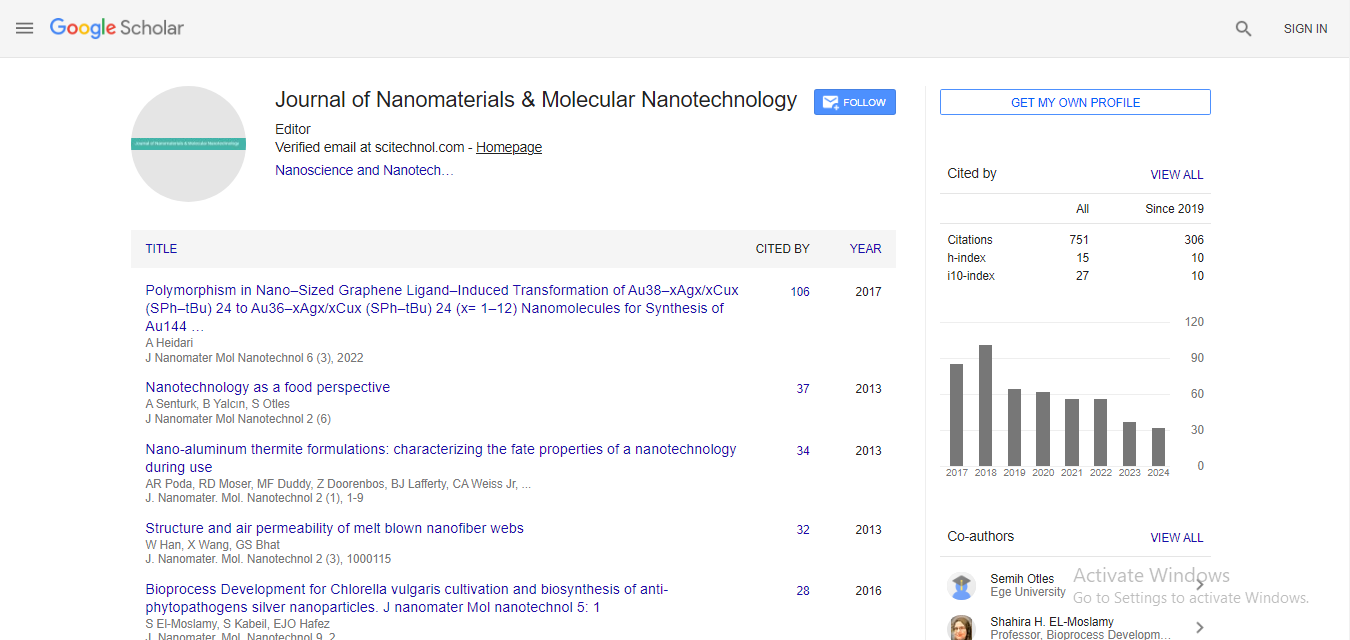Sensitive determination of cysteamine in human plasma based on mos2/reduced graphene oxide nanocomposite
Shiva Fallahian and Fereshteh Chekin
Islamic Azad University, Iran
Islamic Azad University, Iran
: J Nanomater Mol Nanotechnol
Abstract
Cysteamine (β-mercaptoethylamine; CA) bitartrate is a drug approved for the treatment of cystinosis, a rare autosomal recessive disease caused by the abnormal intralysosomal accumulation of the amino acid cysteine with in various tissues [1]. The specific and sufficiently sensitive analytical method was required for total cysteamine determination in biological and pharmaceutical samples [2]. The electrochemical methods have the advantages of simplicity, low expense, and high sensitivity. So, electrochemical methods for the determination of CA have received more attention in recent years [3-5]. The hybrid nanocomposite composed of MoS2 nanosheets and reduced graphene oxide was fabricated by a facile and effective method. The morphology and structure of the nanocomposite (MoS2-rGO) were characterized by scanning electron microscopy, X-ray photoelectron spectroscopy, Raman spectroscopy, electrochemical impedance spectra and voltammetry. The MoS2 nanosheets were uniformly anchored on the 3D rGO framework with strong adhesion. The deposited MoS2-rGO on GC substrate was used for electro-oxidation of cysteamine (CA). Under optimum conditions, the anodic peak current of CA at the surface of modified electrode is lineared to its concentration ranges at 0.01 to 20 μM with a detection limit of 7 nM by amperometry. The proposed electrochemical sensor was used for determination of CA in human plasma. The accuracy of the method was as excellent comparing with the obtained results using reference method. The proposed method showed a good result, indicating that the present modified electrode can be used for determination of CA in real samples. Keywords: Reduced graphene oxide; MoS2 nanosheets; Cysteamine; Plasma.
 Spanish
Spanish  Chinese
Chinese  Russian
Russian  German
German  French
French  Japanese
Japanese  Portuguese
Portuguese  Hindi
Hindi 



